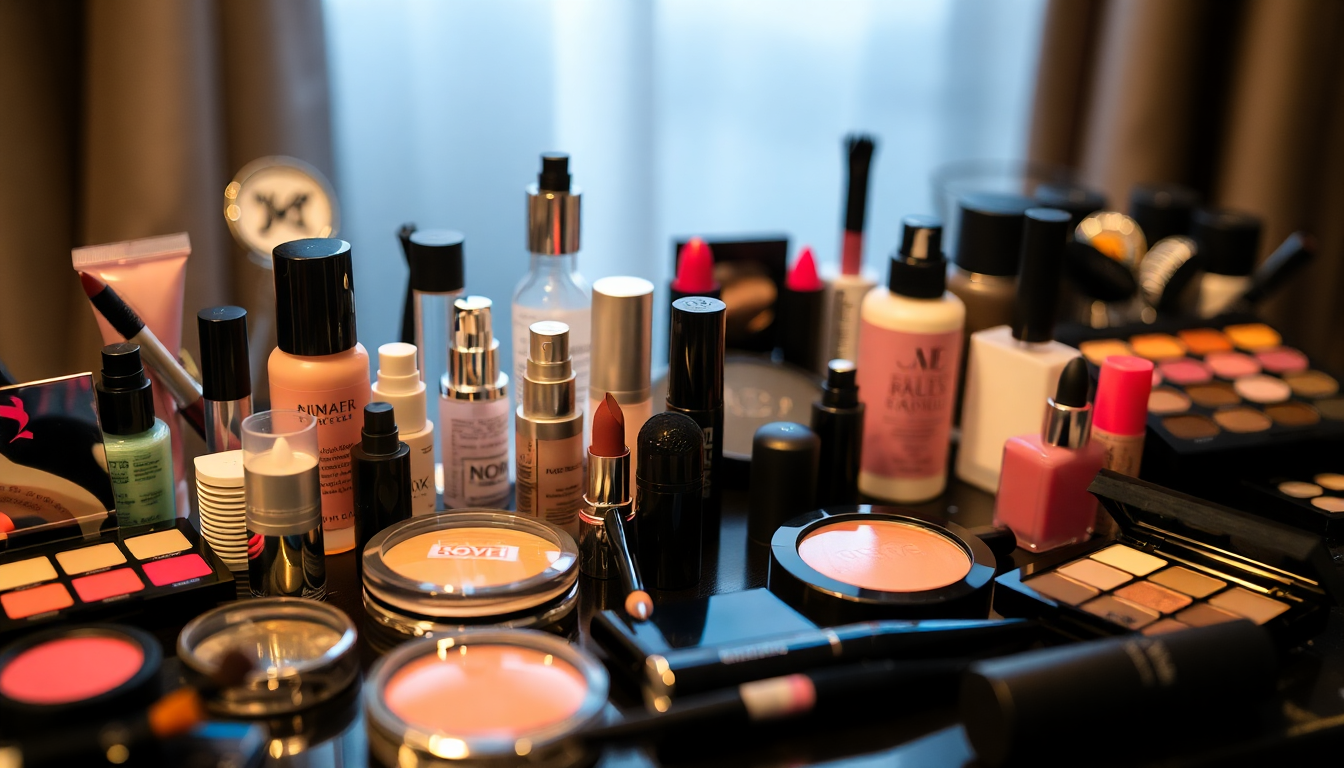
Essential Guide to Launching Your Makeup Brand in New Zealand: Navigating Import Policies, Labeling Requirements, and Market Strategies for 2025
Introduction
Launching a makeup brand in New Zealand can be an exhilarating journey, especially in 2025 when the beauty industry is more vibrant and competitive than ever. Success in this field requires not only creativity and passion but also a thorough understanding of the complexities involved in starting a cosmetics business. This comprehensive guide will equip you with knowledge about import policies, labeling requirements, setting up an online store, and effective marketing strategies to ensure your brand stands out in the market.
Understanding Import Policies
Before diving into product creation and marketing, it’s critical to grasp the import policies that govern cosmetics in New Zealand. Understanding these regulations can save you time, money, and potential legal troubles. Here are key aspects to consider:
- Customs Regulations: The New Zealand Customs Service regulates all imports into the country. Familiarize yourself with their guidelines, as non-compliance can lead to delays or confiscation of products.
- Tariffs and Duties: Investigate tariffs that may apply to your products. While many cosmetics may fall under low or zero tariffs, it's essential to confirm the specifics related to your product categories.
- Documentation: Ensure you have all necessary documentation, including invoices, packing lists, and import permits. Proper documentation is crucial for smooth customs clearance.
- Biosecurity Regulations: New Zealand has strict biosecurity laws to prevent pests and diseases. Ensure your products meet these standards and that any raw materials used are compliant.
Labeling Requirements
Labeling is not just about aesthetics; it plays a crucial role in compliance and consumer safety. In New Zealand, you must adhere to specific labeling requirements to ensure your products meet local regulations:
- Ingredient Listing: All ingredients must be listed in descending order of weight. This transparency helps consumers make informed choices and is a legal requirement.
- Product Information: Include essential information such as the product name, net content, and directions for use. This information is vital for customer safety and satisfaction.
- Country of Origin: Clearly state where the product is manufactured. This helps consumers understand the product's provenance and can influence purchasing decisions.
- Warnings and Allergens: Provide any necessary warnings, such as potential allergens or usage precautions. This information is vital for consumer safety and compliance.
- Expiry Dates: If applicable, include expiry dates or manufacturing dates on your products to ensure consumer safety and trust.
Setting Up Your Makeup Online Store
With the beauty industry increasingly shifting towards e-commerce, establishing a robust online presence is crucial. Here’s how to effectively set up your online makeup store:
- Choose an E-commerce Platform: Select a platform that suits your business needs. Popular options include Shopify, WooCommerce, and BigCommerce, which offer user-friendly interfaces and customizable features.
- Design Your Website: Your website should reflect your brand identity. Invest in a visually appealing design that is easy to navigate and mobile-friendly, as many customers shop on their phones.
- Payment and Shipping Options: Set up secure payment gateways to protect customer information. Also, provide a variety of shipping options, including express delivery, to cater to different customer needs.
- SEO Optimization: Implement SEO best practices to enhance your site’s visibility on search engines. Use relevant keywords, optimize meta descriptions, and add alt tags to images to improve your search rankings.
- Product Photography: Use high-quality images that showcase your products in the best light. Consider hiring a professional photographer or using a lightbox for optimal results.
- Customer Reviews: Incorporate a review system to build trust. Positive reviews can significantly influence potential buyers' decisions.
Marketing Strategies for Your Makeup Brand
Once your products are ready and your online store is set up, effective marketing strategies are essential to attract and retain customers. Here are several approaches to consider:
- Social Media Marketing: Leverage platforms like Instagram, TikTok, and Facebook to showcase your products. Create engaging content, such as makeup tutorials, product demos, and behind-the-scenes looks at your brand.
- Influencer Collaborations: Partner with beauty influencers and makeup artists who resonate with your target audience. They can provide authentic reviews and reach a wider audience.
- Content Marketing: Create valuable content, including blogs, tutorials, and videos to educate your audience about your products and the makeup industry. This establishes your brand as a thought leader.
- Email Marketing: Build an email list and send out newsletters with updates, promotions, and personalized offers. Email marketing is a powerful tool for fostering customer loyalty.
- Promotions and Discounts: Offer introductory discounts or seasonal promotions to attract new customers. Consider bundling products for special offers to increase average order value.
- Paid Advertising: Invest in targeted ads on social media and Google to reach potential customers. Use demographic targeting to ensure your ads reach the right audience.
- Community Engagement: Engage with your audience through social media contests, giveaways, and interactive posts. Building a community around your brand fosters loyalty and encourages word-of-mouth marketing.
Building Relationships with Suppliers
Establishing strong relationships with suppliers is crucial for sourcing quality ingredients and packaging. Here’s how to build these relationships:
- Research Suppliers: Conduct thorough research to find reputable suppliers who align with your brand values. Look for those with a track record of quality and reliability.
- Negotiate Terms: Once you’ve identified potential suppliers, negotiate terms that work for both parties, including pricing, delivery schedules, and minimum order quantities.
- Maintain Communication: Keep open lines of communication with your suppliers to address any issues promptly and build trust.
- Quality Control: Implement quality control measures to ensure the products you receive meet your standards. Regular audits and checks can prevent potential issues.
Staying Compliant with Regulations
Compliance with local regulations is not just a legal obligation but also a vital part of building trust with your customers. Here are some tips to stay compliant:
- Stay Informed: Regularly update yourself on any changes in cosmetic regulations in New Zealand. This includes changes in labeling, safety standards, and import policies.
- Consult Experts: Consider consulting with regulatory experts or legal advisors specializing in cosmetic regulations to ensure compliance.
- Document Everything: Keep meticulous records of all your products, including formulations, ingredient suppliers, and testing results. This documentation can be crucial in case of audits.
Conclusion
Launching a makeup brand in New Zealand in 2025 is a challenging yet rewarding endeavor. By understanding import policies, adhering to labeling requirements, setting up a compelling online store, and implementing effective marketing strategies, you can create a successful cosmetics business. Additionally, building solid relationships with suppliers and staying compliant with regulations will further enhance your chances of success. Stay adaptable, keep learning, and let your passion for makeup shine through your brand. With the right strategies and determination, you can make a significant impact in the beauty industry.




